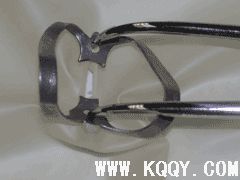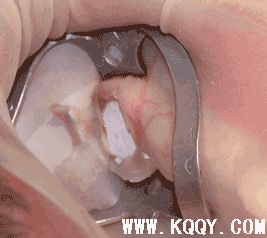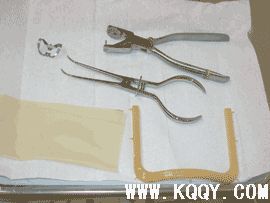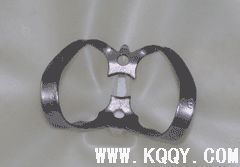Simple steps to ensure the safety of our patients are sometimes overlooked or omitted. Here are some serious reasons why you should always “dam it.”
As children growing up, our parents frequently reminded us of ways to stay safer. One particular bit of advice I remember was that of wearing a seat belt while riding in a car. However, I often perceived this simple and critical task as trivial and not “cool.” Eventually, I came to realize that my parents were right in their counsel such that now, I instinctively fasten my seat belt upon entering a vehicle.
In dental school, we are routinely taught the importance of performing procedures with established protocols and standard techniques. Since graduating, however, I have come to realize that at times, dentistry is more of an art form than a science course. That is, protocols are amended and techniques modified with the hopes of securing the best outcome for an individual patent, all while practicing within the standards of care of the dental community. Nevertheless, simple steps that are meant to ensure the safety of our patients are sometimes overlooked or omitted simply because we find them cumbersome and onerous. One such example is the practice of using a rubber dam while performing procedures such as restoration removal and placement, crown preparations and subsequent cementations, as well as endodontic procedures.
As a seat belt protects a driver or passenger from suffering a life-threatening injury, the rubber dam protects a patient from harm by eliminating the chance of aspirating a foreign material. Additionally, the rubber dam helps to maintain a contamination-free environment by preventing saliva and blood from coming into direct contact with the tooth throughout the procedure. Indeed, use of the rubber dam is so simple and risk-free that not using it in procedures of root canal therapy, or RCT, may be considered below the standard of care of the community and thus be a cause of action in a malpractice suit.
Consider a case where a patient aspirates a #10 K-file while you are performing a root canal. Skip a few months forward and imagine being questioned on the witness stand by the plaintiff’s attorney: “Doctor, did you use a rubber dam throughout the procedure?” What would your answer be? If you answer “No,” your fate will be quickly sealed, as the jury will likely find you liable for the injuries suffered by your patient. Now, imagine how easy it would have been to prevent this all from happening by simply placing a rubber dam.
 Through the years, I have noticed that many general dentists have adopted the practice of performing root canals without the benefit of a rubber dam. These dentists typically complain of how long it takes to place a rubber dam, but how burdensome can 10 to 12 seconds be? Place a hole in the middle of the dam (2 seconds); put the dam around the endo clamp (3 seconds); use the clamp to put the rubber dam around the tooth (5 to 7 seconds). And with proper training, dental assistants can prepare the rubber dam and place it on the patient for you.
Through the years, I have noticed that many general dentists have adopted the practice of performing root canals without the benefit of a rubber dam. These dentists typically complain of how long it takes to place a rubber dam, but how burdensome can 10 to 12 seconds be? Place a hole in the middle of the dam (2 seconds); put the dam around the endo clamp (3 seconds); use the clamp to put the rubber dam around the tooth (5 to 7 seconds). And with proper training, dental assistants can prepare the rubber dam and place it on the patient for you.
 Now, let’s consider the advantages of using a rubber dam while performing many types of procedures. It provides the ability to concentrate on the tooth without interference from the patient’s tongue or cheek. The rubber dam also will eliminate frequent rinsing, as the saliva ejector can be securely placed under the dam. This avoids the many soggy cotton roll replacements during procedures. Furthermore, saliva and blood, the two most common reasons for direct as well as indirect restoration failures, are eliminated. Elimination of such failures and redos will ultimately increase productivity. Best of all, it provides peace of mind in knowing we have significantly diminished the risk of the patient aspirating a foreign body. All it takes is 12 seconds.
Now, let’s consider the advantages of using a rubber dam while performing many types of procedures. It provides the ability to concentrate on the tooth without interference from the patient’s tongue or cheek. The rubber dam also will eliminate frequent rinsing, as the saliva ejector can be securely placed under the dam. This avoids the many soggy cotton roll replacements during procedures. Furthermore, saliva and blood, the two most common reasons for direct as well as indirect restoration failures, are eliminated. Elimination of such failures and redos will ultimately increase productivity. Best of all, it provides peace of mind in knowing we have significantly diminished the risk of the patient aspirating a foreign body. All it takes is 12 seconds.
If you are routinely employing a rubber dam in your procedures, great; but if you find it to be insignificant and burdensome, just remember the unnecessary risks to which you are exposing your patients and how little time it takes to prevent them. Most likely, you will find that with routine use of the rubber dam, you will start liking your procedures more and can concentrate on the final product, whether it be root canal therapy, post space preparation and cementation, or crown preparation, as well as cementation of an indirect restoration. With a rubber dam, results can be more predictable while eliminating worries about untoward incidents.
Dr. Pedram Eli Mastourmaintains a private practice in Culver City, Calif., with an emphasis on esthetic and reconstructive dentistry. A member of the American Dental Association and California Dental Association, he also is a clinical instructor at the University of Southern California School of Dentistry, primary oral health care section. Dr. Mastour may be reached at (310) 390-6212, or e-mail mastour@usc.edu
相关阅读:
 发表评论
发表评论 用户评论
用户评论

